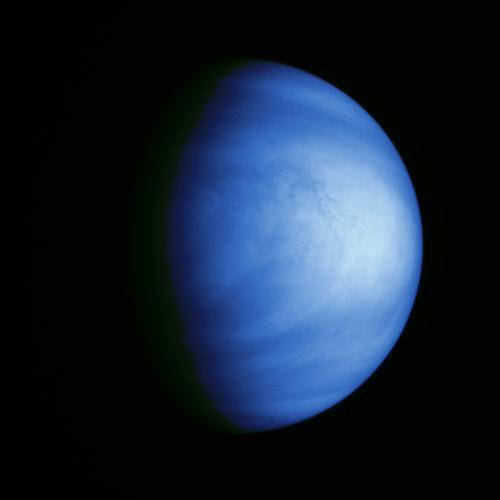
Image courtesy of NASA.
Today, Venus is an oppressive and stormy place. With an ambient temperature hot enough to melt lead, surface pressure comparable to the depths of Earth's oceans, and an atmosphere composed mainly of carbon dioxide and sulfuric acid, Venus is an inconceivably inhospitable place for life to thrive. However, this was not always the case. The Venus Express satellite has detected large amounts of hydrogen and oxygen escaping into space from the Venusian atmosphere; more specifically, two molecules of hydrogen for every one molecule of oxygen. Sound familiar? It should. Liquid water, or H2O, shares this exact ratio and evaporates into its constituent gases when struck by UV light from the sun. Current research implies that most of this water was probably atmospheric, but it does not rule out the possibility of ancient oceans on the Venus' surface. Water is thought to be a crucial ingredient for the evolution of carbon-based life forms, making the existence of standing water on Venus at some point in history appealing to astrobiologists studying the origin of life in the solar system.
No comments:
Post a Comment